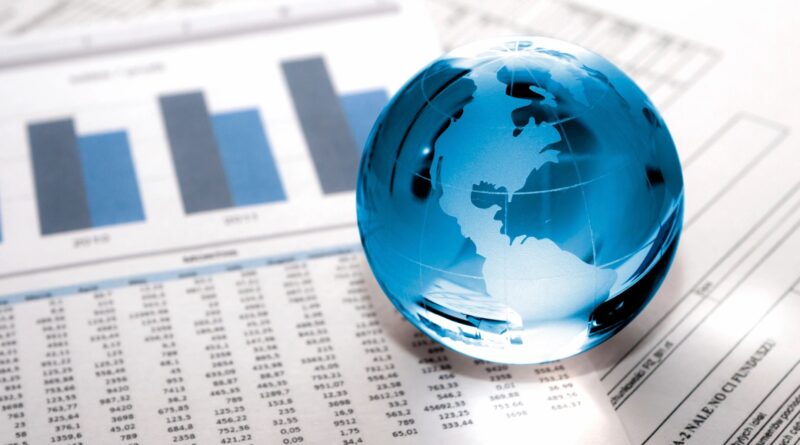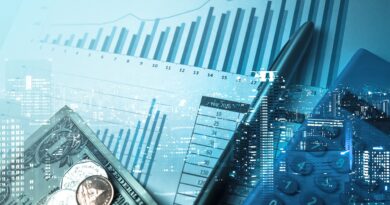US dollar forecast 2024. What to expect (and how to take advantage of it)
As Fed monetary policy expectations change, what are the forecasts for the US dollar in 2024? The dollar fell 2.88% in November against a basket of other major currencies, its worst monthly performance of the year, as expectations grow for interest rate cuts next year by the Fed, sending yields tumbling of Treasuries from multi-year highs.
At the moment the ten-year Treasury yields 4.26%, from the highs of 5% reached just 50 days ago.
Of course, the end of US rate hikes does not necessarily imply structural weakness of the dollar.
There are no physical laws in financial markets.
Over the last 40 years, in fact, the dollar has had an average stable configuration compared to other international currencies in the months immediately following a final rate increase, i.e.
following the peak of the Fed monetary policy.
Why the US dollar will fall in 2024 But in 2024, if the war in Ukraine turns into a truce, and the situation between Hamas and Israel stabilizes, the dollar will slowly decrease in value, precisely because geopolitical tensions will lose strength in different parts of the world.
But this is only a hope for now.
Which could be achieved anyway.
The dollar would devalue because it would lose its function as a safe haven.
But the dollar could depreciate for other, more concrete reasons, if we follow the thesis of some economists who see the United States and its economy slowing down sharply in 2024.
A weaker US economy, together with the decline in inflation, will probably lead to a trend of devaluation of the dollar against the main international currencies, a weakening dictated by a deflation – if not stagnation – of the US economy.
The role of the Fed in 2024 And finally, in support of the thesis on the weak dollar, we must not forget the role of the Fed in 2024.
Personally I prefer to hypothesize a trend of weakening of the dollar based on the Fed's change of course, precisely by virtue of the fact that the Fed, having been the first central bank to raise rates, will also be the first central bank to cut them.
But it is a medium-term weakening trend, which could sometimes also be characterized by temporary strengthening of the dollar against the euro and other international currencies.
Federal Reserve officials appear on track to end the year with the rhetoric of interest rate hikes as “a thing of the past,” but they have an looming challenge in the very near term over “when” and “how” to signal a turn towards rate cuts.
Cuts that investors, politicians and the public can anticipate well before the central bank is ready to actually do so.
Simply put: the reduction in interest rates on government bonds may accelerate further, and well beyond the willingness of the Fed, or other central banks, to reduce official rates, simply because inflation expectations are dramatically falling.
Even today, despite the rally of recent weeks, the long-term part of the government yield rate curve (both dollar and euro) represents a buy opportunity as the undersigned has long argued (in articles such as "Bonds, this is an opportunity of investment to seize immediately” and “Markets, opportunities (and risks) with the increase in interest rates”, published in October, and in “3 best BTPs to buy today”, published in November).
But back to the Fed.
Deciding that inflation has fallen enough to start cutting rates may be a matter of months, with implications for American domestic politics, precisely because there will be a presidential election in 2024, and in presidential election years the Fed has hardly allowed itself to be "restrictive" in its monetary policy.
The first step towards this debate on the timing of the first rate cut by the Fed will take place at the final Fed meeting of the year, i.e.
12-13 December, when in addition to describing the performance of the US economy the members of the Board will have to decide what to do with interest rates in 2024.
Every single word of Powell's final press conference will be carefully weighed by investors, looking for a signal that indicates the moment of the first cut in official rates.
Personally, for the Fed meeting on December 13th I expect that American monetary policy makers will be able to keep rates steady for the third consecutive meeting and take stock of recent data from the US economy, which have largely moved in line with a landing soft in which economic activity and job growth slow while inflation steadily declines.
But they won't say more.
Investors, meanwhile, have increasingly fixated on March as the starting point for rate cuts.
But I don't think the first rate cut will happen in March.
The mistake of cutting too soon, before inflation has convincingly returned to 2%, is one that Powell has explicitly pledged not to make, citing the experience of Fed officials who eased prematurely in the 1970s.
politics and then came the explosion in oil prices.
In short, it is a credibility problem for the Fed to wait until there are clear signs of a decisive slowdown in inflation, in order to change monetary policy from restrictive to expansionary.
I repeat: you need to carefully read the interviews and statements of the members of the Fed board of governors to understand what atmosphere you breathe in the steering committee.
However, I was struck by the fact that one of the most conservative members, who has always advocated a bitter fight against inflation, Governor Christopher Waller, gave a very condescending interview on November 28th on the probability of reaching the 2% inflation target in short term (we quote: “I am increasingly confident that policy is currently well positioned to slow the economy and get inflation back to 2%”).
The dollar could therefore devalue more quickly the faster the path towards the Fed's first rate cut is.
What to expect on the euro-dollar exchange rate in 2024? However, giving targets on the euro-dollar exchange rate is impossible.
The EURUSD = 1.10 level is quite within reach.
More interesting would be targets of 1.12 and then 1.15.
How to speculate on the dollar in 2024? How can you trade these bearish dollar expectations? There are ETFs that focus on the strengthening of the euro and the devaluation of the dollar.
Let's take one with 5x leverage and it is the WisdomTree Short USD Long EUR 5x Daily (ticker USE5 IM) ISIN JE00BMM1XD84, whose correlation with the EURUSD cross is quite strong, as can be seen from the BLOOMBERG graph in the table below.
The ETF in question, which is bearish on the dollar, therefore replicates the performance of the aforementioned exchange rate and allows you to profit on the bet of a weak dollar for the coming months.
Attention: this is a speculative product (in the basket of the ETF in question there are “long” derivative contracts on the euro and therefore “short” on the dollar) and must be inserted with prudence in a widely diversified portfolio, and always according your risk appetite.
But, without doing downward directional trading on the dollar with euro-dollar futures that are used by the "insiders" of institutional investors, this ETF offers the possibility of earning with movements of strengthening of the euro against the dollar with a small expense and easily liquidated on the Italian stock market.
DISCLAIMER The information and considerations contained in this article should not be used as the sole or primary support on which to make investment decisions.
The reader maintains full freedom in his own investment choices and full responsibility in making them, since he alone knows his risk propensity and his time horizon.
The information contained in the article is provided for informational purposes only and its disclosure does not constitute and should not be considered an offer or solicitation to public savings.




